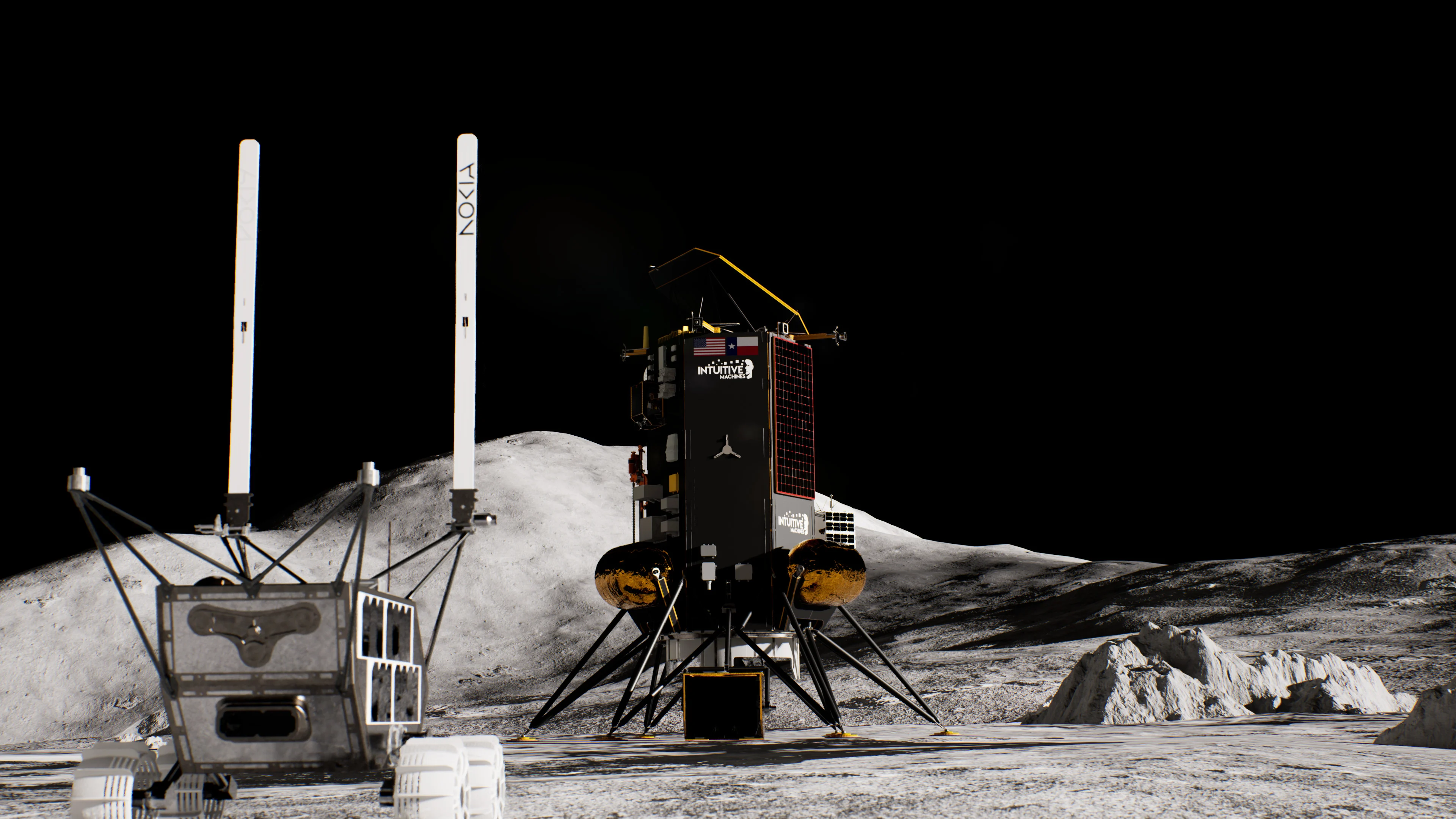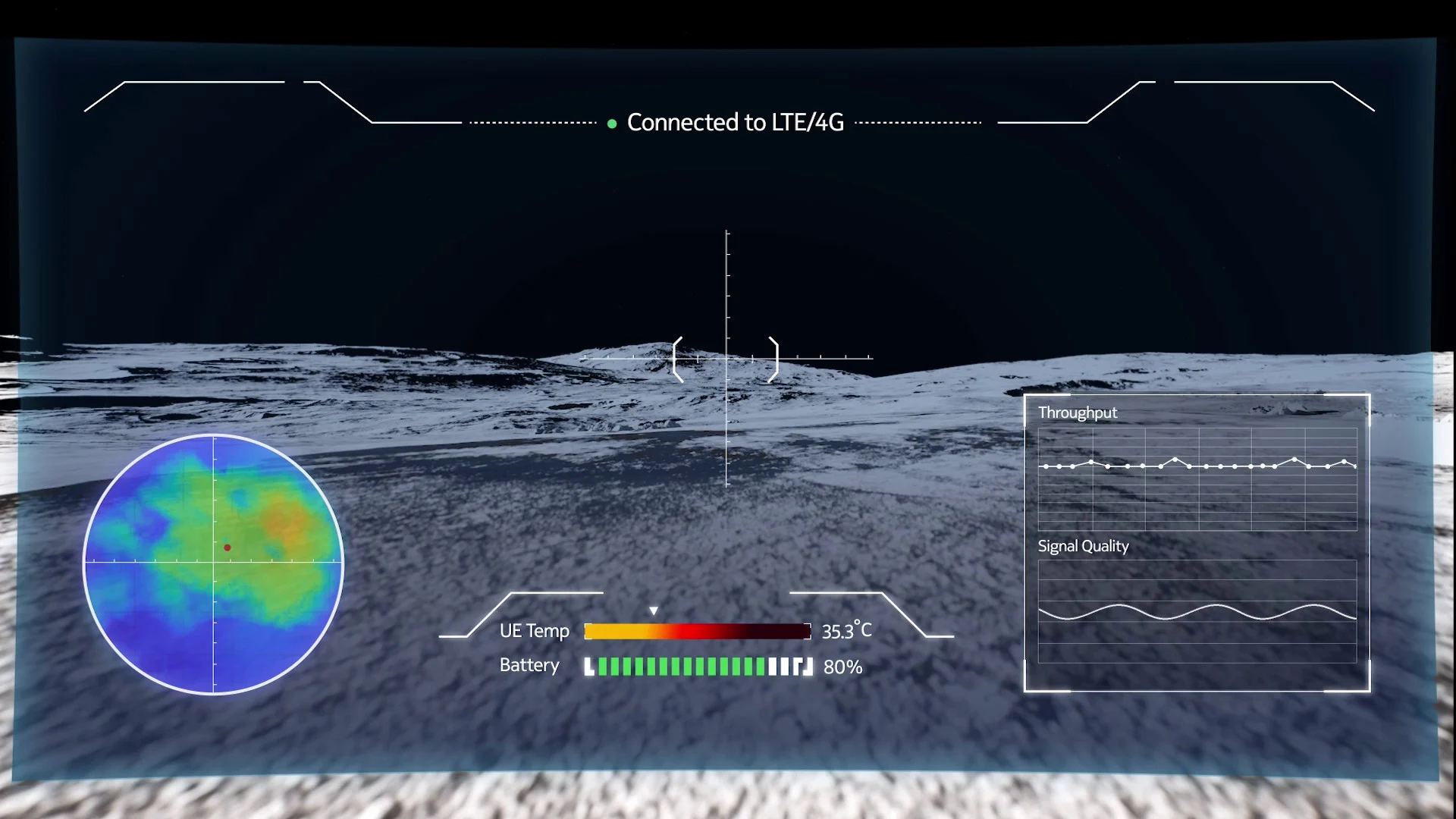
Nokia plans to set up the first 4G cell network on the Moon later this year
This mission will give a new definition to the term 'mobile internet'.
In planning for future lunar missions, NASA and Nokia have teamed up to deploy the first 4G communications network on the Moon.
In the years ahead, NASA has some ambitious plans for the Moon. Artemis II is expected to launch in November 2024, carrying 3 American astronauts and one Canadian on the first crewed lunar mission since 1972. Following that, Artemis III is scheduled for sometime in 2025. Using new technologies and sporting newly designed spacesuits, a team of astronauts will touch down near the Moon's south pole.
In the near term, these missions are intended as stepping stones for establishing the Lunar Gateway space station as a permanent human presence around the Moon. From there, Gateway will support further exploration of the lunar surface. In the long term, the station will also provide us with the knowledge necessary to send the first human missions to Mars.
However, for these plans to succeed, there needs to be a leap forward in space communication technology. To make that happen, NASA turned to Nokia.
In November 2023, SpaceX is expected to launch Intuitive Machines' IM-2 Nova-C lunar lander on a journey to touch down next to Shackleton crater, near the Moon's south pole. The primary mission of Nova-C is to extract a sample from a metre below the lunar surface to test for the presence of water ice. This will be the first attempt at extracting resources from the Moon. In addition, it will also release Lunar Outpost's M1 MAPP rover to roll around the landing site and perform a second 'first' for space exploration.

This artist's conception drawing shows what the Nova-C lander and M1 MAPP rover will look like at their landing site on the Moon. Credit: Nokia
As M1 MAPP roams about, part of its mission will be to deploy hardware designed by Nokia to establish a space-hardened, two-way 4G communications network with Nova-C.
"We are delivering a complete end-to-end LTE network that has multiple parts to it," Thierry E. Klein, the President of Bell Labs Solutions Research, said in a Nokia press release. "The first part is an LTE base station with integrated Evolved Packet Core network functionality." A wireless communication system with Evolved Packet Core, or EPC, is one that treats voice as the same as data on the network.
"It's integrated into a very small, ultra-compact form factor that will go on the lunar lander from our mission partner, Intuitive Machines, along with a passive antenna system," Klein explained. "The second part is the user equipment and an omni-directional antenna that will be integrated in a rover. The rovers will be transported to the lunar surface and autonomously deployed by the lunar lander. An LTE link will be established between the lander and the rover to provide lunar surface connectivity."

While this view may not be exactly what the M1 MAPP rover records as it rolls around, this simulation does show what the robot will need to track as it navigates and runs its tests — terrain, temperature, battery charge, rate of message delivery (throughput), and communication signal quality. Credit: Nokia
According to Klein, the purpose of using a rover is to test communications over a range of distances. The rover will stay within a few hundred metres of the lander to establish a short-range network. Then, it will drive between two and three kilometres away to test long-range communications.
Even though 4G is proven technology on Earth, putting a network on the Moon poses challenges over and above what we encounter here.
First, the equipment must be tough enough to survive both the vibrations and g-forces of the launch and the rigours of the landing. Second, there's the exposure to vacuum and the potential impact of cosmic rays on the electronics while on the lunar surface. Third, temperatures at the lunar south pole vary greatly between direct sunlight and shadow.

This image of Shackleton crater, near the lunar south pole, was taken by NASA's Lunar Reconnaissance Orbiter. On the left is how it appears to the Lunar Reconnaissance Orbiter Camera (LROC), while on the right, data from LRO's Lunar Orbiter Laser Altimeter (LOLA) reveals the interior of the perpetually-shadowed crater. Credit: NASA's Scientific Visualization Studio
While the rover will avoid travelling into the perpetually-shadowed craters in the region, a high crater edge or large boulder casts a long shadow at the south pole. Thus, a wrong turn or a poorly-planned route could plunge the rover into extreme cold conditions. Also, Nokia says that, even across the few centimetres thickness of their antennas, there could be a temperature difference of more than 100°C!
Additionally, the lunar environment and the properties of the lunar regolith may impose unique challenges and limitations on the hardware and on how radio waves propagate across the surface.
"The lessons learned from this first mission will be invaluable for future space exploration as well as for connectivity in remote parts of Earth," Nokia said on their website. "The long-term goal is to eventually deploy a permanent cellular network on the Moon so its future visitors – whether rovers, robots or humans – can easily communicate with voice, video and data applications. Our initial foray to the Moon is the first step toward connecting the far-flung corners of space."
Editor's note: A previous version of this article incorrectly stated that this mission had an expected launch in late June of 2023 and named the Nova-C landing site as being near a crater named Malapert A. These details are for Intuitive Machines' IM-1 mission. Nokia's lunar 4G network will be part of the IM-2 mission, which is expected to launch in November 2023 and land near Shackleton crater. These details have been corrected in the article above, and we apologize for any confusion.






